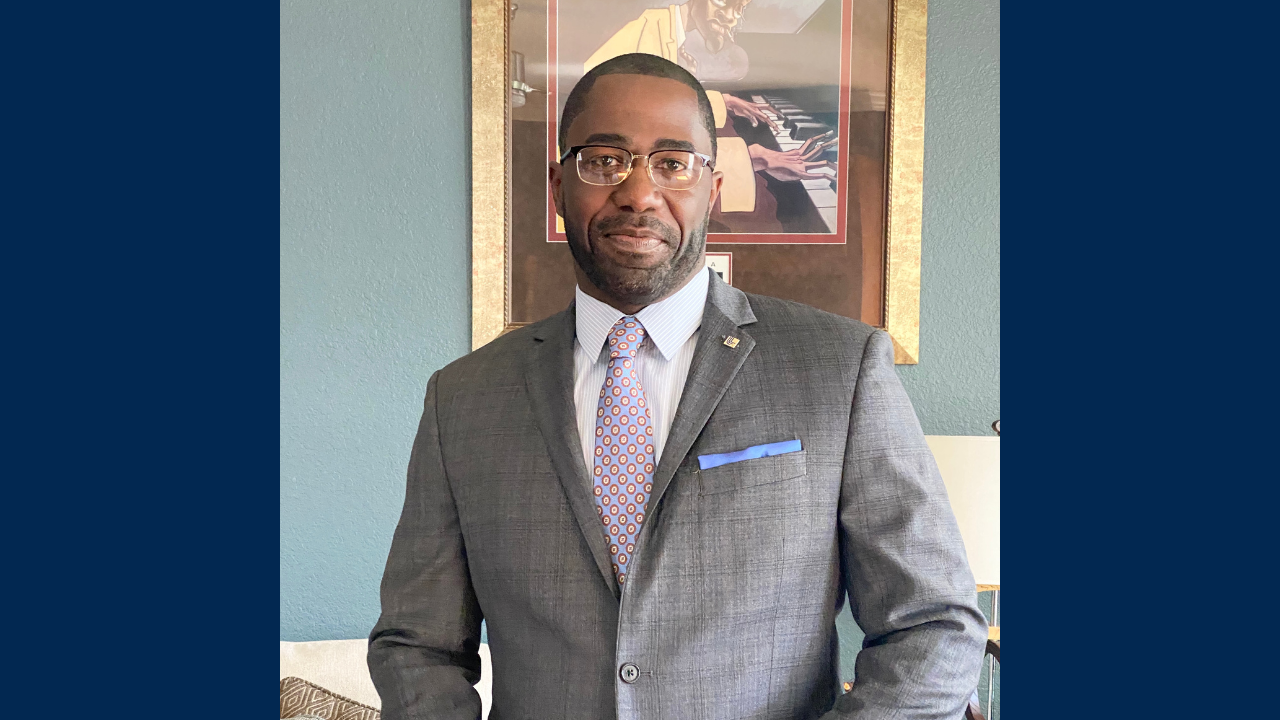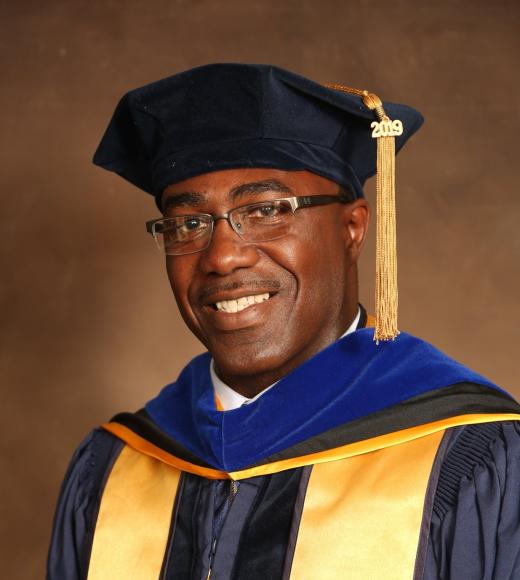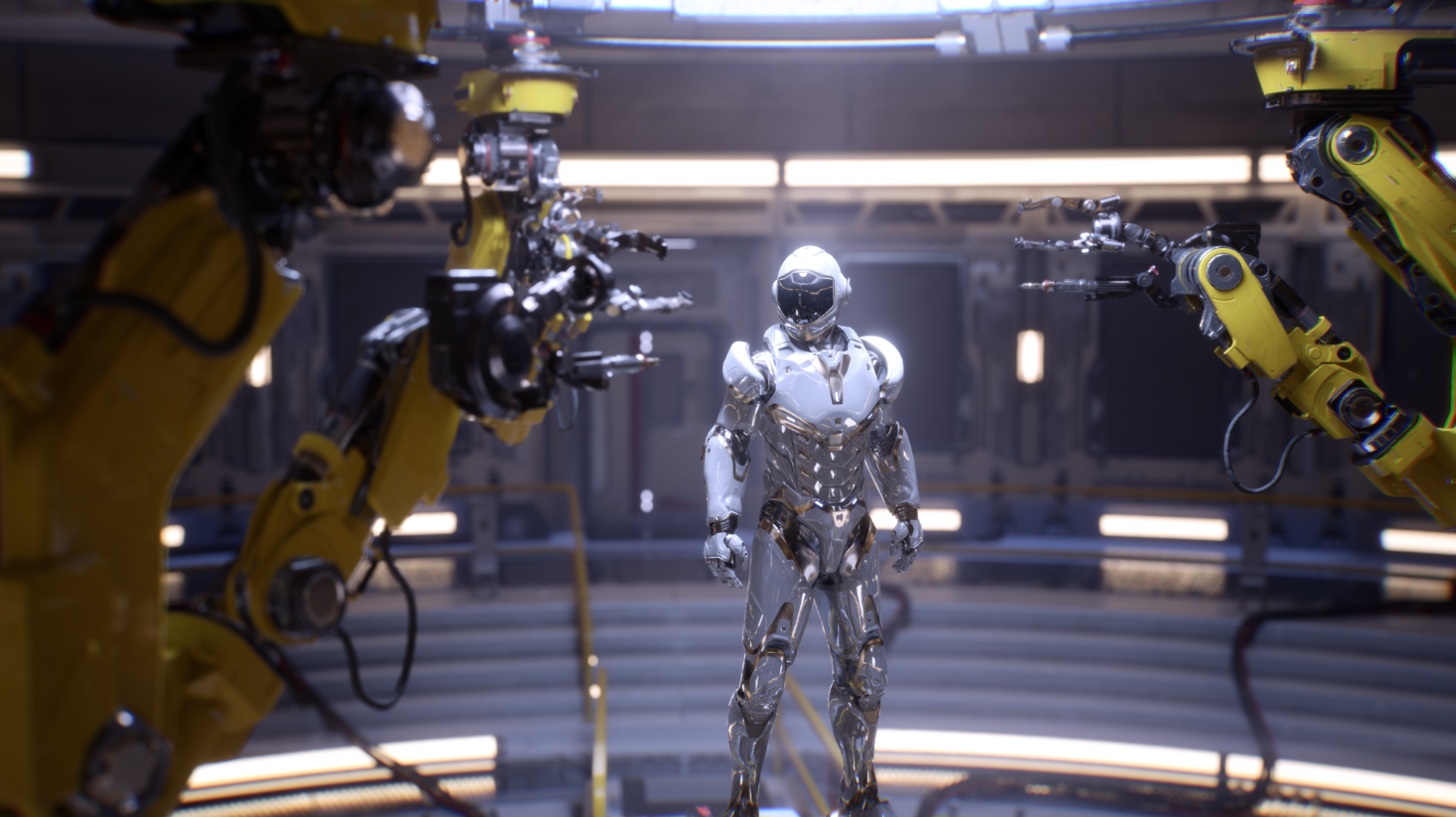
Empowering Communities: A Computer Science Alum's Journey from Lab to Mentorship
When Kevin Griffin was in middle school, he took his first computer science class. He used an old Apple computer and built a game in which the computer picked a random number between one and 10 and the user had to guess that number.
"It wasn't anything fancy," said Griffin. "But that program was just amazing to me, to be able to code that and have people play it. It started my love for computer science."
Griffin went on to earn a bachelor's degree in computer science from the University of Delaware and a master's degree from the University of Tulsa before working at Lawrence Livermore National Laboratory, or LLNL.
At the lab's National Ignition Facility, Griffin worked on user interface software, collectively called the maintenance and commissioning tools, that significantly improved operators' and researchers' speed and reliability for controlling the 192-laser beam system. He later moved to LLNL's Weapons and Complex Integration organization, where he supported scientific visualization tools like VisIt, an open-source animation and analysis software.
Going the Distance
Professors from the University of California, Davis, would often visit the lab for their own experiments and research, and Griffin was somewhat starstruck by these heavy hitters in the computer science field. He considered pursuing a Ph.D., which would give him the opportunity to work with and be mentored by these computer science luminaries and satisfy a budding curiosity to go in-depth into research.

His decision was made that much easier by his ability to take many of his classes remotely through the Distance Learning Program, a collaboration between LLNL and the UC Davis College of Engineering, which allows full-time LLNL staff to pursue an advanced degree and incorporate their work into their research.
Griffin embarked on his Ph.D. program in 2012, and was able to make it to campus a few times a month for exams and lectures, but for the classes he couldn't be physically there for, cameras were set up in a UC Davis classroom to stream the lesson into a classroom at LLNL.
"The partnership the lab had with UC Davis was just fantastic," said Griffin. "If you're working on a Ph.D., the lab also allows you to do your research at the lab as part of your dissertation, so it's not like I'm working at the lab and doing a Ph.D.; you can kind of combine the two. I thought that was a great opportunity for me."
Griffin's research involved applying an estimation algorithm called smoothed particle hydrodynamics, or SPH, a numerical method used to simulate fluid flows, to large scientific datasets in high-performance computing scenarios for advanced scientific visualization, which is used in fields like engineering and medicine to render anything from robot design to proteins. Because of the university partnership, he was able to utilize LLNL resources for his research, including one of the lab's supercomputers.
Griffin especially valued his experience with his mentors, which included computer science professor emeriti Ken Joy and Bernd Hamann, who served as Griffin's advisor.
"These professors are big names in the field and are renowned worldwide," said Griffin, "so for me, being able to see how they work, publish papers, get funding, how they look at different conferences, how you carry yourself as a professional and access to their vast network of colleagues, that part is priceless."
Griffin points to his relationship with Hamann as being especially educational, describing the professor as well-structured and not one to curtail tough love.
"He didn't hold any punches, which I like," said Griffin. "Like when it wasn't good, he'd let you know. The good thing is that once I would try to publish something or submit something to a conference, I knew it was going to get accepted because it already went through Bernd. If it goes through him, I know I'm good."
Industry Professional and Professor
Now, as a senior developer technology engineer at Nvidia, a computer hardware and software company that specializes in accelerated computing, Griffin works with companies and researchers to maximize their usage of graphics processing units, or GPUs, in advanced visualization as well as high-performance computing and machine learning.
In advanced visualization, Griffin works on specifications and tools that use advanced rendering techniques, like ray tracing and path tracing, to simulate the physics of light, resulting in the automatic creation of shadows and reflections that produce photorealistic and interactive images.

"If you look at some of the newer games and they look really real, like you can't tell them apart from a movie, those are algorithms that we create and the hardware we use that allow for that," he said.
Alternatively, in the high-performance computing and machine-learning realm, Griffin aids companies and researchers with optimizing and speeding up their code by using Nvidia tools and APIs — application programming interfaces, which facilitate communication between two or more computer programs — that allow their code to be easily profiled and run on the latest Nvidia hardware. Running their code on a regular computer could take days or months, but Griffin helps compress the time frame to seconds by running it on supercomputers or Nvidia's GPUs.
In addition to his role at Nvidia, Griffin also teaches an introduction to computer science class at San Joaquin Delta College in Stockton, in which he discusses the history of computer science and the components of a computer, as well as basic programming. Unlike in Silicon Valley, where universities and community colleges can take advantage of the proximity to tech workers to teach classes and visit as guest speakers, Griffin saw a need in Stockton for industry professionals to bridge the education gap between the academic aspect of computer science and industry applications.
"I always talked about how that area could benefit from researchers and folks like that, and, you know, if I'm talking about it, I might as well put my money where my mouth is," he said. "If I can talk about the need, I can be one of the people who helps fill it."
Building the Next Generation from the Ground Up
Griffin is currently embarking on a new mentorship role as an entrepreneur-in-residence with Tulsa Innovation Labs, or TIL, a nonprofit initiative seeking to grow Tulsa, Oklahoma into a Silicon Valley of the Midwest. Last October, Tulsa was designated one of 31 Tech Hubs by the U.S. Economic Development Administration as part of a $500 million investment in technology and industries of the future.
Through its project, the Tulsa Hub for Equitable & Trustworthy Autonomy, the TIL aims to create 200,000 new autonomous systems-related jobs over the next decade, particularly for Black, Latinx and Native American individuals. Griffin will be helping new researchers and startups in cyber security, AI and machine learning as part of two of the project's initiatives: The University of Tulsa Cyber Fellows and Black Tech Street.
Cyber Fellows is a cohort of doctoral students conducting cutting-edge research in data analytics, AI, machine learning and social behavior to solve complex problems in the commercial cyber security field. Black Tech Street aims to reclaim Black Wall Street and the historic Greenwood District as a thriving tech ecosystem.
Not only is Griffin excited to offer his mentorship to the Cyber Fellows, but he's also thrilled engage at the ground floor of Black Tech Street and impact these companies as they are starting out. However, he also sees these new positions as his personal opportunities to give back to his community.
"As an African American with a Ph.D. in computer science, that doesn't happen without Martin Luther King Jr. or the folks that died out in Black Wall Street," he said. "I have all these opportunities, and you kind of feel guilty when you look at the history and all of the people who have suffered and died for that sacrifice. I'm benefiting from all of that. Now it's my turn. It was like, 'Wow, this can be my moment where I give back and help the next generation.'"
